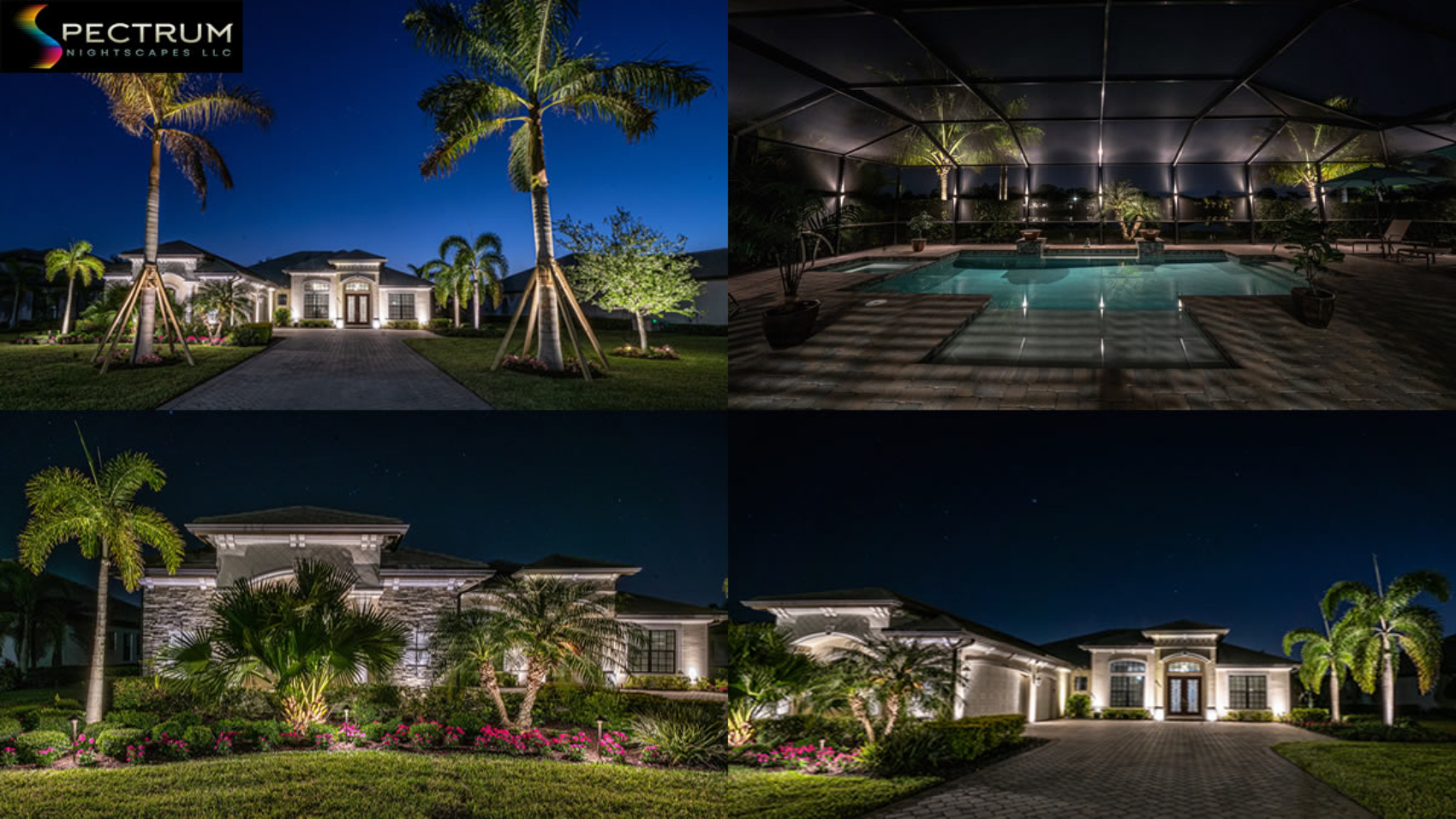Yard lighting design involves strategically placing lighting fixtures to illuminate outdoor areas effectively. This practice not only enhances the aesthetic appeal of a property but also improves safety and usability during nighttime.

Effective yard lighting design considers factors such as the purpose of lighting (e.g., security, ambiance, functionality), types of fixtures, light intensity, and energy efficiency. By thoughtfully integrating lighting into the landscape, homeowners can create harmonious and functional outdoor spaces that cater to various needs and preferences.
Why is Yard Lighting Design Important?
Implementing a well-thought-out yard lighting design offers multiple advantages that extend beyond mere illumination. Firstly, it significantly enhances safety by illuminating pathways, steps, and potential obstacles, thereby reducing the risk of accidents during nighttime.

Secondly, it bolsters security; well-lit exteriors deter potential intruders by eliminating dark hiding spots. Moreover, strategic lighting accentuates architectural features and landscaping elements, elevating the property’s aesthetic appeal. Additionally, it extends the usability of outdoor spaces, allowing for evening gatherings and activities.
Lastly, with the advent of energy-efficient options like LED and solar-powered lights, homeowners can achieve these benefits while minimizing energy consumption and costs.(Harmony Home Design, Better Homes & Gardens)
What Are the Different Types of Yard Lighting?
Yard lighting encompasses various types, each serving specific functions and contributing uniquely to the overall design.(Outdoor Living Style)
Pathway Lights: These are small posts with built-in lights, typically used to illuminate walkways, driveways, and garden paths, enhancing safety and guiding movement.(Valley Deck & Patio, Outdoor Lighting Perspectives)
Spotlights: Designed to highlight specific features like trees, sculptures, or architectural details, spotlights provide focused illumination, creating dramatic effects.(Outdoor Living Style)
Floodlights: Emitting broad beams of light, floodlights are ideal for covering large areas, often used for security purposes around perimeters and driveways.(Outdoor Living Style)
Deck and Step Lights: Installed directly into decks or steps, these lights enhance safety by illuminating elevation changes and can also add a subtle aesthetic touch.(Outdoor Lighting Perspectives)
Bollard Lights: Short, sturdy fixtures that provide 360-degree illumination, bollard lights are commonly used to line pathways or define boundaries within a yard.(Wetlands Irrigation & Turf Care, P. J. Pappas Company)
String Lights: Often used for decorative purposes, string lights can be draped over patios, pergolas, or trees to create a warm and inviting atmosphere.
Lanterns and Post Lights: These fixtures combine functionality with decorative appeal, suitable for illuminating entryways, patios, and garden areas.(Tebock’s Landscape, P. J. Pappas Company)
In-Ground Lights: Also known as well lights, these are installed flush with the ground, providing upward illumination to highlight features without visible fixtures.(Tebock’s Landscape)
Motion Sensor Lights: Activated by movement, these lights enhance security by illuminating areas only when activity is detected, conserving energy.(Valley Deck & Patio)
Solar Lights: Harnessing solar energy, these eco-friendly lights are easy to install and operate, ideal for areas with ample sunlight.(BroadPick)
How to Choose the Right Yard Lighting Fixtures?
Selecting appropriate lighting fixtures involves considering several factors to ensure functionality, aesthetics, and efficiency.
Begin by identifying the purpose of each light ,whether it’s for safety, security, accentuating features, or creating ambiance. For instance, use path lights for walkways, spotlights for highlighting trees, and string lights for entertaining areas.

Material choice is crucial; fixtures made from durable materials like stainless steel, copper, or brass withstand outdoor elements better and offer longevity.
Energy efficiency is another consideration. LED lights consume less power and have longer lifespans compared to traditional bulbs. Solar-powered options are also viable, especially in sunny regions, reducing electricity usage.
Lastly, ensure the fixtures complement the overall landscape design and architectural style of your home, maintaining visual harmony.
What Are the Key Principles of Effective Yard Lighting Design?
Effective yard lighting design is guided by principles that balance functionality and aesthetics.
Layering: Incorporate multiple layers of light—ambient, task, and accent—to create depth and dimension. Ambient lighting provides overall illumination, task lighting focuses on specific areas like cooking or reading spots, and accent lighting highlights features.(Homes and Gardens)
Balance and Proportion: Ensure the lighting is evenly distributed, avoiding overly bright or dark areas, and that the size of fixtures is proportionate to the space.
Focal Points: Use lighting to draw attention to key elements such as a water feature, sculpture, or a beautiful tree, enhancing visual interest.(The Sun)
Functionality: Prioritize lighting in areas that require visibility for safety and usability, like steps, pathways, and entrances.(The Spruce, People.com)
Energy Efficiency: Opt for energy-saving technologies like LED or solar-powered lights to reduce environmental impact and operational costs.(Tebock’s Landscape)
Control and Flexibility: Implement controls like timers, dimmers, or smart systems to adjust lighting according to different needs and times, enhancing convenience and energy savings.
How to Plan and Implement a Yard Lighting Design?
Planning and implementing yard lighting involves a systematic approach to achieve desired outcomes. Start by assessing your outdoor space, noting areas that require illumination for safety, functionality, or aesthetic purposes. Sketch a layout indicating the placement of various lighting fixtures corresponding to their intended functions.
Choose appropriate fixtures based on the earlier discussed types, ensuring they suit the specific needs of each area. Consider the power source , decide between wired, battery-operated, or solar-powered options based on feasibility and preference.
Installation should adhere to safety standards, especially for electrical connections. If unsure, consult or hire a professional to ensure proper setup. After installation, test the lighting during nighttime to assess effectiveness and make necessary adjustments. Regular maintenance, such as cleaning fixtures and replacing bulbs, ensures longevity and consistent performance.

For personalized and professional assistance, consider reaching out to experts like Spectrum Nightscapes, who offer customized lighting solutions tailored to your specific needs and preferences.
In conclusion, yard lighting design is a vital aspect of landscape planning that enhances safety, security, and aesthetic appeal. By understanding the various types of lighting, selecting suitable fixtures, adhering to design principles, and implementing a well-thought-out plan, homeowners can transform their outdoor spaces into functional and enchanting environments.






